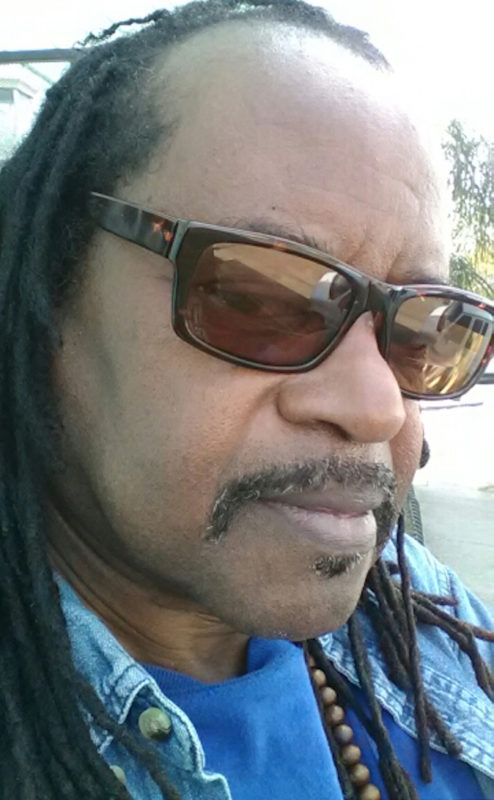
Niya’s grandfather, Zohar Israel. Photo from author.
Niya Zulu: Were you around Mardi Gras during your childhood?
Zohar Israel: Well when we were children living in the Desire projects (in the mid 1960s) Chief Walter Ramsay was living across the street from our house. And he had sons and daughters, and what we used to do at night is go and sit on his porch and he would teach us the songs, the Indian songs, and it’s a lot of different songs out there – each tribe had their own version of songs. And I learned different – I learned the one from Chief Ramsay’s tribe, and we used to sing that particular song, like:
I peeped through the needle,
I saw the white eagle,
oh flag, of flag,
the Indian dance.
The Indian dance,
I climb up the ladder,
with my bow and arrow,
oh shoo shoo the rumble,
oh chicken and gumbo,
oh gravy train.
You know, it was words that only him really understood. We didn’t really understand – the words didn’t make sense. But we learn it. And right now when you listen to the stories being told, we have to be apart of that culture where we understand what they saying. So we learn the songs through different chiefs or different people who would sing the songs. So each Chief needed to know how to sing. Now we had one or two Chiefs that didn’t know how to sing, but he would always have someone with him that did the singing for them.
Niya: So they sang pretty much the same songs as they sing now?
Zohar Not too much different. You know they may add a little bit to it. But you gotta remember now this was back in the 60s and 70s – they would make war with each other, to be frank. Like you got the one that go out front, you got a spy boy. Spy boys are in front of the tribe when they coming. He’s like the lookout man. So when he see another tribe coming, they got a spy boy also. So the spy boys would meet up, and they would try to outsing and outdance each other, and they would actually compete with each other. And then you have what they call the “wild man.” He would come out dressed, you know with horns and different things like that. He was to intimidate the other tribes.
 NOLAbeings
Multimedia artist Claire Bangser created NOLAbeings as a portrait-based story project that marries...
NOLAbeings
Multimedia artist Claire Bangser created NOLAbeings as a portrait-based story project that marries...
 Data corner: Adobe Suite (create a PDF, social media graphic, presentation, edit a photo and video
Data corner is where you go to work with analytics and top tech skills. It takes on everything from PERL and SQL to Canva and Sprout Social.
Data corner: Adobe Suite (create a PDF, social media graphic, presentation, edit a photo and video
Data corner is where you go to work with analytics and top tech skills. It takes on everything from PERL and SQL to Canva and Sprout Social.
